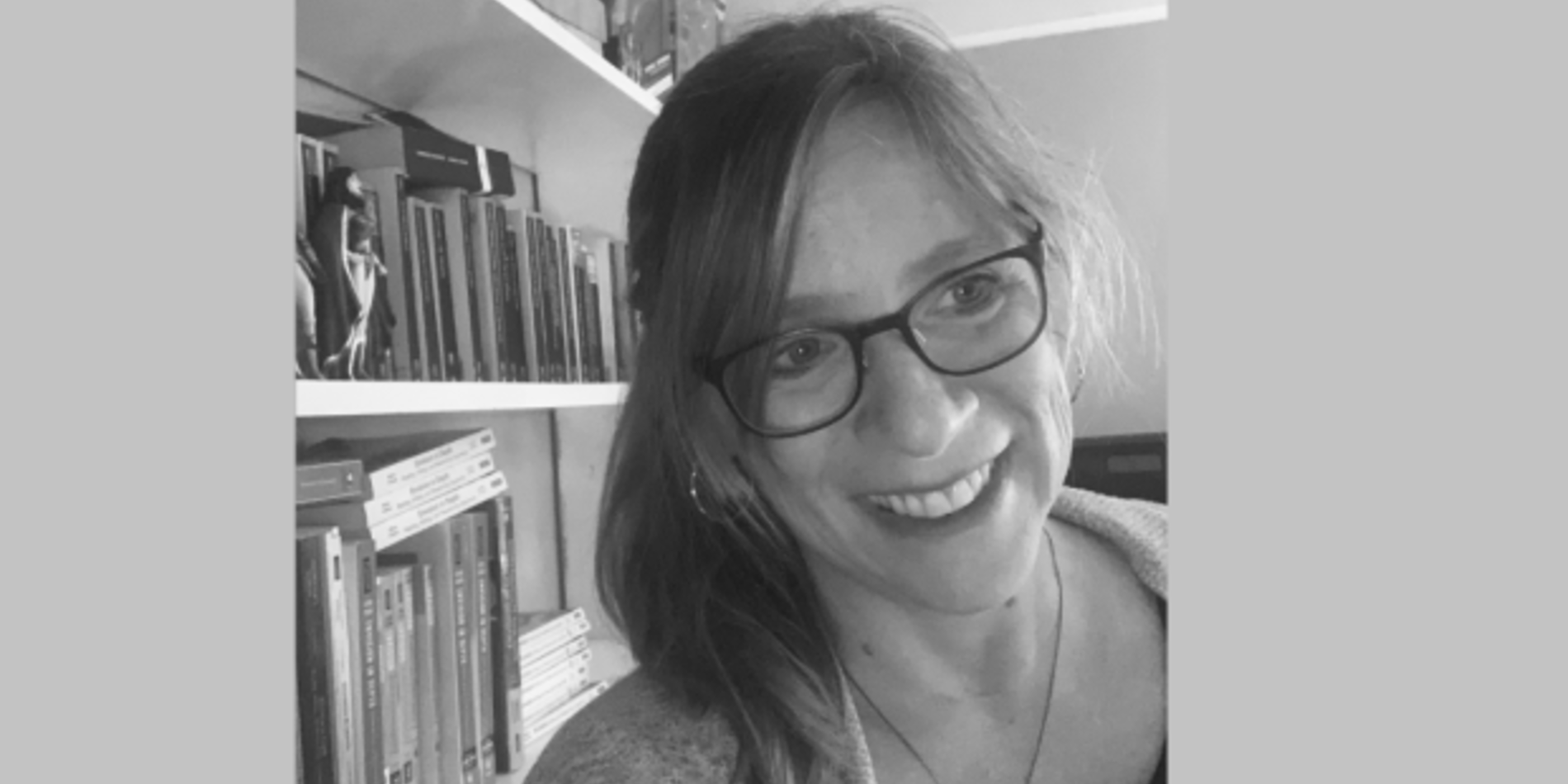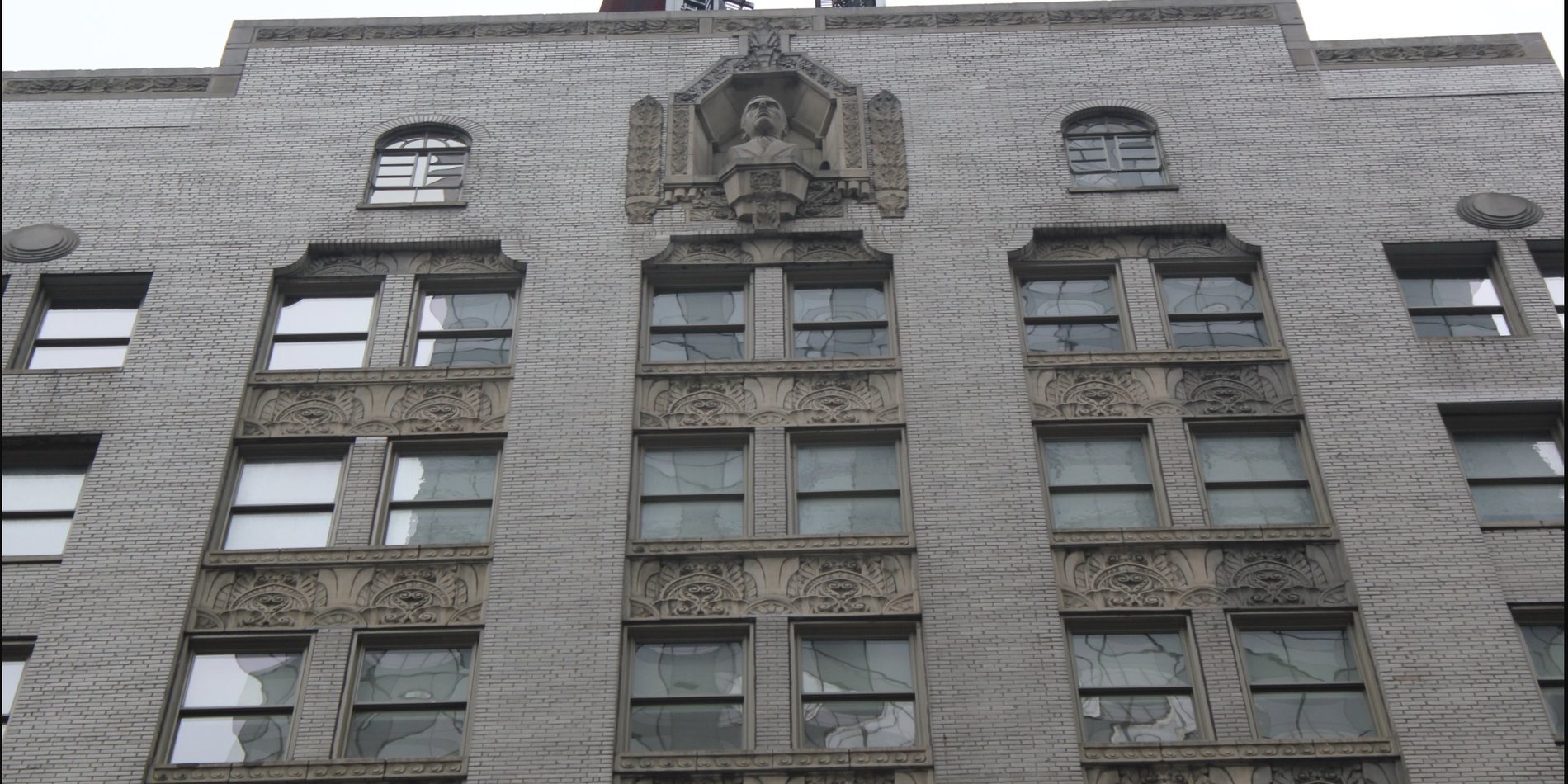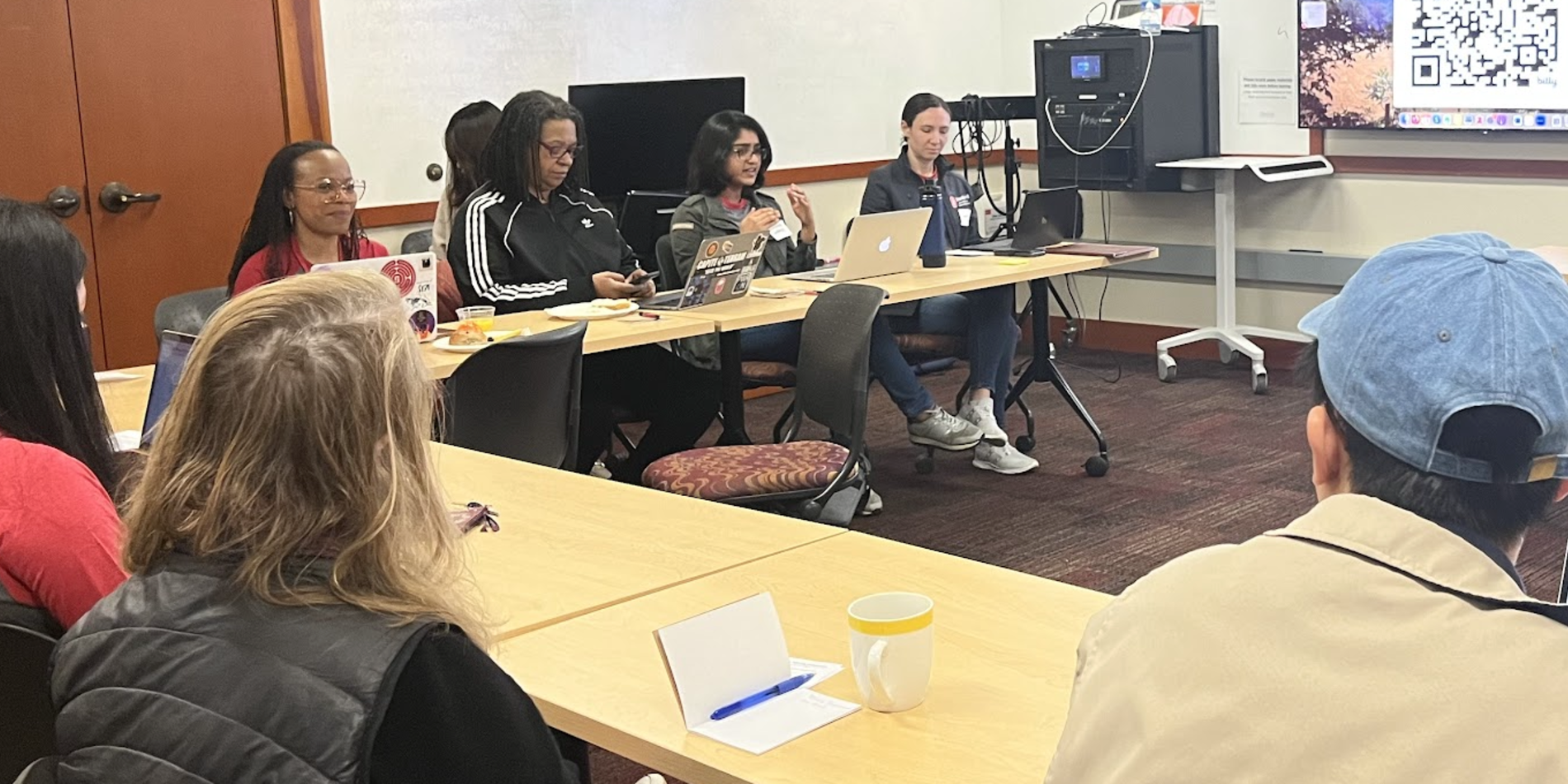Prior to the Fall 2022 Semester at Sea voyage, I watched an inspiring Stanford Arts conversation with Amy Sherald and Calida Rawles, visual artists renowned for their figurative portraits of Black life. The pair who first met in drawing class at Spelman College developed a “fast friendship” around their shared passion for painting, an artistic fervor so strong that they often remained in the class building afterhours, eluding detection to paint into the morning. While already an admirer of Sherald whose captivating grayscale portraits garnered a commission to paint forever First Lady Michelle Obama, this was my first introduction to Rawles and her ethereal water paintings.
Drawing on water memory theory, “the idea that water can contain molecules of things that ran through it,” Rawles’ allegorical portraits arise from a historical understanding of water as a tool for racial oppression. Water holds the memories of “the middle passage and all of the bodies in that water,” the systemic exclusion of Blacks from pools and beaches and the legacy of devastatingly “high drowning rates,” and the violent hosing of Black bodies. To cast a more hopeful vision, Rawles renders Black figures “calm and in control” amid the “powerful force and element,” signifying that “you can persevere” and “overcome.”

The last couple of years, so heavily marked by the pandemic and related stressors, left me feeling anything but “calm and in control.” Semester at Sea (SAS), a global comparative study abroad program for college students and other learners, enabled me to reclaim a sense of calm in wonder, to set a new rhythm among the waves, creating my own water memories through teaching, travel, and self-discovery. Over 105 days, as we traveled to 11 countries—the Netherlands, Portugal, Morocco, Spain, Croatia, Greece, Cyprus, Jordan, Kenya, India, and the United Arab Emirates—I relinquished the need for weekdays and weekends and learned to order my days by the water. When we were at sea, I taught creative fiction and nonfiction, directed the writing center, and engaged in a host of other activities, like leading morning devotions on deck (figure 1), proctoring Global Studies exams, and facilitating writing conversations about journaling and reflection for the shipboard community. When we were in port, I set off on elective field programs to well-known and obscure sites, experiencing as much of the people and cultures as I could. There were also planned field classes, like taking my fiction writers on a daylong excursion to a women’s cooperative in the Wadi Rum to learn about the resilient lives and work of Jordanian Bedouin women.
I became quite accustomed to this rhythm, a week at sea then a week in port, and its unexpected adventures. I won’t soon forget taking a thrilling jeep ride on a Tsavo East safari that stained my white top a dusty rose, visiting an Indian café run by survivors of acid attacks and the brave women who shared their stories, and belly dancing in a Moroccan restaurant as SASers cheered me on. But months after the voyage, I find myself thinking the most about what happened on or in connection with water and the lingering impact of those experiences.
Waking Up at Sea

Looking out my cabin window (figure 2) in the morning was one of my greatest joys. As the sun rose, I watched the water transform, inviting me to embrace each day with hopeful fascination. Opaque navy giving way to glassy sky blue as schools of flying fish, sometimes dolphins, crested the water’s surface. More curious than afraid of the water’s cavernous depths, I slid open the window and leaned out, allowing the wind to caress my face. I explored the water’s expanse in awe and felt more keenly the wonder of creation, my smallness in the vastness of the sea, a great big world, and an even larger universe. In those contemplative moments, the water was constantly moving and changing, beckoning me to change, too.

And I did change. I let go of the weight that I had been carrying and the need to know what was coming next. I exhaled and released my anxieties, trusting that the day ahead held good things for me and that I would be a part of the good in someone else’s day. When I returned to the water between teaching and other activities, I found it always waiting to surprise me with new contours and colors. I agreed that my life was also surprising and allowed my heart to fill with gratitude as the water received the amber sun (figure 3).

Admittedly, the water was not always calm. There were stormy days and times when the waves were high and rocky (figure 4), but to my delight I had greater capacity for those days having already decided to embrace the journey with curiosity. These water memories remain with me, inspiring me toward awe in the everyday, even during life’s uncertainties.
An Encounter at Sea

On October 10, our ship, the MV World Odyssey, encountered a small vessel carrying 13 passengers, including a child in arms (figure 5). I was on deck at the time grading papers when I felt the ship turn around. Leaving my laptop, I hurried to the portside railing where a handful of SASers were standing. We trained our eyes on the water and spotted a vessel adrift in the distance. The captain soon announced over the intercom that a signal flare was sighted, and we had turned around in response. Spain’s Civil Guard was on the way, but we would stand at the ready in case emergency assistance was needed. Deckhands clad in white safety gear sprinted past us to prepare the lifeboats.

As our ship drew closer to what appeared to be a small fishing boat, the passengers waved their arms and called out, “Help us!” “We have a baby,” lifting the infant for us to see. “Do you speak English?” By this time, more SASers had gathered and were waving back. A student on the deck above me called out, “Help is coming!” During the hour that it took for the Civil Guard to arrive, our concern for the passengers grew. Was their boat taking on water? Were any in their group ill and in need of medical care? Why were we waiting when the lifeboats were ready to be deployed? What was our ethical responsibility? Where did they come from (figure 6)? Might they be refugees from Algiers? What would happen if we brought them onboard? What would the Civil Guard do with them? Regrettably, we never learned their fate. Once they were picked up, our ship turned around and continued its journey.
In class the next day, I asked my nonfiction writers to share what they had observed and how they might approach the subject as nonfictionists. A student from Latvia connected their observations to a video they watched the night before of the Pope “condemning lack of care for immigrants as sinful,” noting “the Mediterranean Sea is the largest graveyard in the world.” A student from the Netherlands mentioned SASers feeling frustrated that “we weren’t doing anything” and questioned how our response aligned with Maritime Law. I recalled how carefully the captain, and later the academic dean, detailed the steps taken and wondered if other SAS voyages had experienced anything similar. We all remarked how harrowing news accounts of immigrant and refugee crossings had become more real for us in the wake of this encounter.
In some respects, the passengers of the small boat were fortunate. The sea was calm and the skies clear when they found themselves in distress, but the outcome could have been drastically different during a storm or if our ship had not detected their flare. On the other hand, we don’t know what threats they were fleeing and if they were sent back to face even greater dangers. We could only sit in the discomfort of not knowing and the striking juxtaposition of their life-threatening crossing with our trip of a lifetime.
Walking in Wet Footprints

When SASers and I visited the Gurudwara Bangla Sahib in India, a famous Sikh shrine with a prominent “Sarovar” pool inside its complex (figure 7), we removed our shoes and socks according to custom. Walking through the carpeted temple in single file (figure 8), we observed the beauty of the sacred space, and then made our way outside to a shallow indention in the marble floor filled with standing water. To our surprise, all visitors take this same path through the narrow pool and up the marble steps, leaving behind debris from their feet and picking up other traces of humanity as wet, muddy footprints comingle. The slippery marble steps and walkway lead to the dusty floors of the langar, a community kitchen where barefooted volunteers prepare free meals for thousands daily. Everyone is welcome, regardless of their religion, ethnicity, gender, or other social locations.

After washing my hands, I stood at a table crowded with Indian women preparing roti. Despite the language barrier, I managed to exchange names with the young woman beside me, who kindly showed me how to pat the olive oil mixture on the hot roti with my hands and then place the slices in a large wooden barrel, making use of every available space. After a while, I stepped aside to allow others to serve and observed devotees and visitors enter for the afternoon meal, their bare feet and hunger unifying characteristics. Going shoeless and sockless, whether volunteering or participating in the langar, was a palpable symbol of our shared worth regardless of our differences. It was also a powerful way of connecting to a cultural and spiritual tradition very different from my own.
Historically, Black Protestant churchgoers donned their Sunday best out of respect for God, but also because church was one of the few communal spaces where they were allowed a sense of dignity. You could be somebody at church—a respected preacher, teacher, deacon, or mother—welcome respite in the world of Jim Crow where Blacks were made to cower in the presence of whites or risk the deadly consequences of being considered “uppity.” Contemporarily, whether Black churches encourage formal or casual attire, there is a growing understanding that clothing should not be a barrier or deterrent. The gurudwara and langar reminded me that intentional unifying practices, like wading barefoot through water, can go a long way in making such values a reality.
A Closing Thought
As a non-swimmer and one prone to motion-sickness, I assumed that I was best suited for the shore, that the destinations, rather than the journey, would be the most fulfilling. But I enjoyed traveling by water at least as much, if not more than, the places we visited. At sea and on land, water restored me, renewed my sense of wonder, and revived my hope in a common humanity. I’m now more likely to consider seafaring trips, along with other modes of travel, mindful that we can create new water memories that reconnect us with our best selves.



